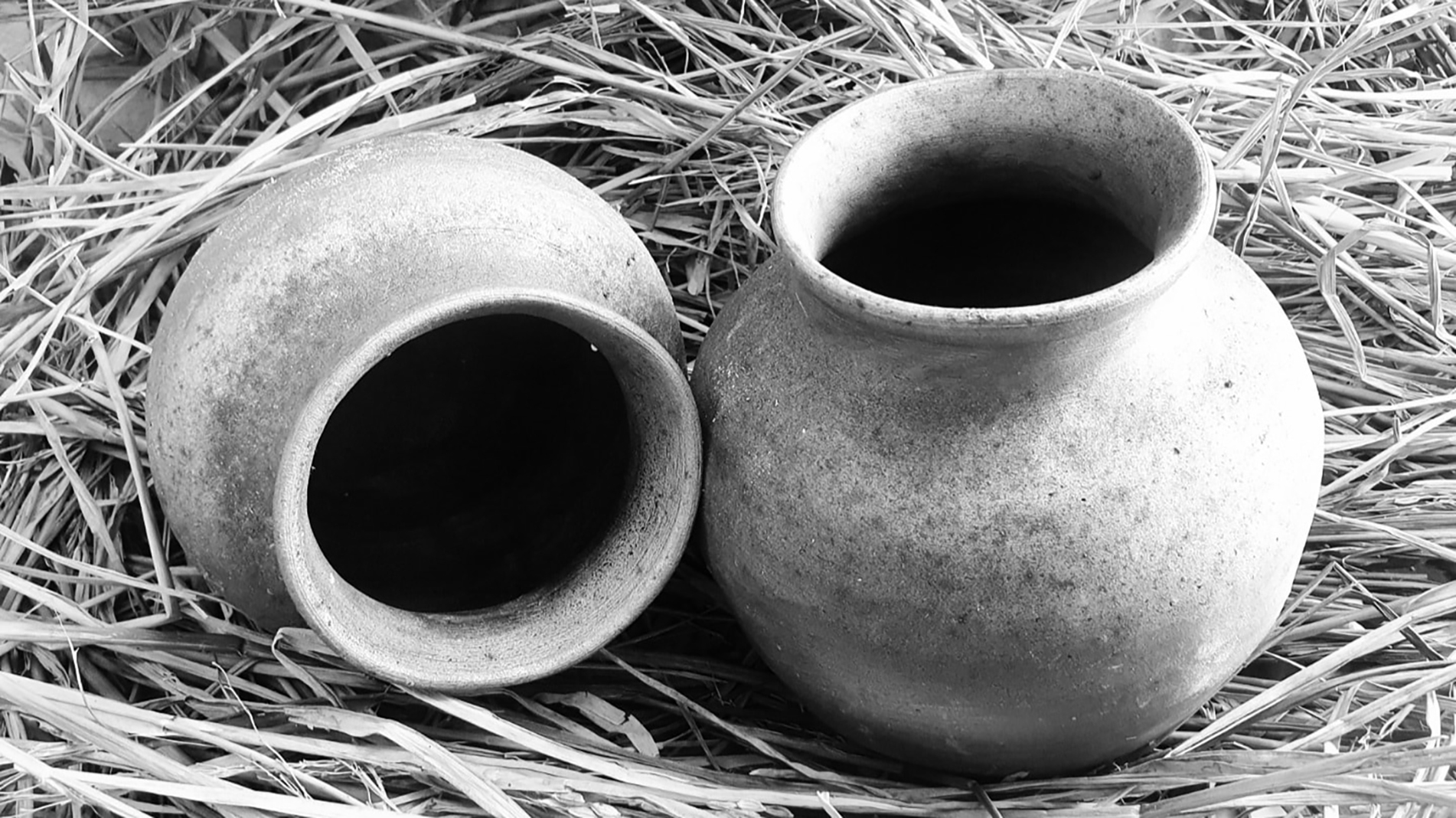a prosperous time of handmade pottery
Muong Chanh commune, Mai Son district is considered the ancient pottery center of the Black Thai ethnic group in Son La province. In the years 1979-1985, Muong Chanh pottery entered its most prosperous period, it was present in all districts and towns in the province and some localities of Lai Chau province, even famous throughout the Northwest region. Pottery making crept into every household, turning this place into a traditional craft village with a scale, enough to feed the people of the whole commune.
“Our ancestors have been making pottery for many generations. When I was born, I saw my grandfather and father making pottery. They could not finish their work all day, so after dinner they took the opportunity to make pottery. Later, firewood became increasingly scarce, so many people gave up the profession,” said Mr. Hoang Van Phuong, a potter in Muong Chanh.
Although no one knows exactly when this pottery craft began, the materials, process and decoration methods of Muong Chanh pottery are said to have many similarities with prehistoric pottery, about 2,000 years ago.
Muong Chanh pottery is unglazed, the products usually have two main colors: dark gray or silvery dark gray. After firing, to get the dark gray color on the product, Muong Chanh people put fresh chestnut leaves into the kiln to create smoke on the product. The pottery is a smooth type of pottery, has the advantage of being difficult to break, less leaky, so since ancient times, Thai people have liked to use it to brew wine, make fish sauce, store pickled bamboo shoots, ... or to store seeds, rice, cassava, food and as tools for raising poultry. They also produce some valuable pottery such as large jars, small neck vases used as dowries for daughters when they get married.(according to Dr. Le Thanh Son, Culture and Arts magazine)

Muong Chanh pottery has a characteristic dark gray color. To create a pottery product, three steps are needed: preparing raw materials, shaping, and firing. Men are in charge of preparing the clay, shaping, decorating, and firing; women operate the wheel.
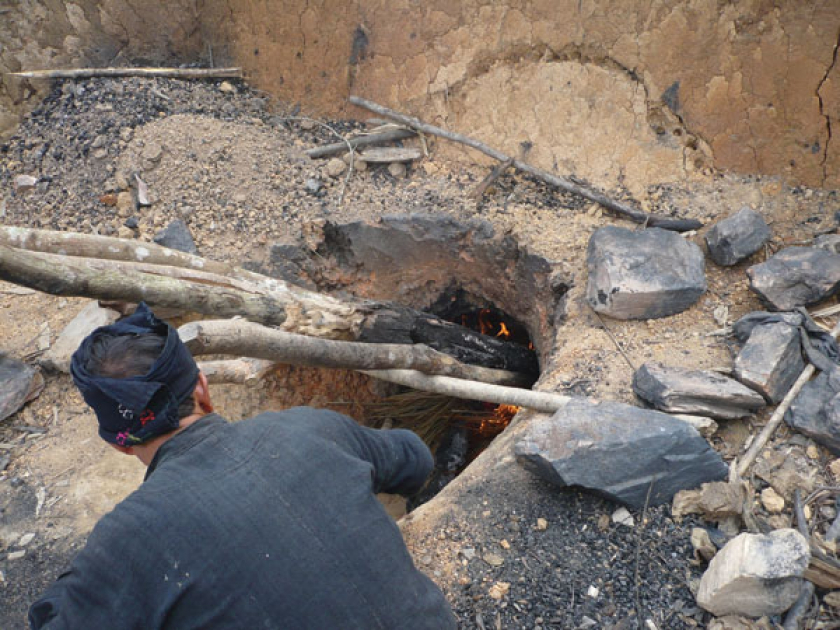
The kiln in Muong Chanh is a sunken kiln, meaning that the tunnel is dug deep underground and only leaves a hole big enough to crawl down to place the product to be baked and to have a place to burn firewood.
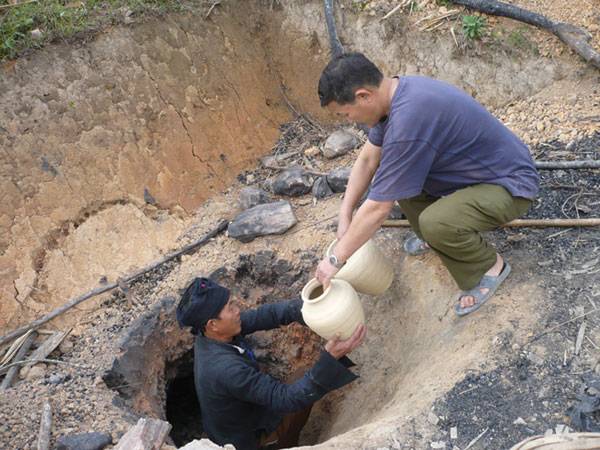
The firing stage is considered the most important, the worker must know how to regulate the temperature in the kiln. It must be increased gradually, otherwise everything will be damaged and broken.
Faced with the diverse development of modern ceramic products, the traditional craft of making ceramics in Muong Chanh is gradually fading away; what used to be the main profession is now only a secondary profession, organized according to the household model.
In fact, more and more people are giving up making pottery in Muong Chanh not only because of the lack of firewood or the difficulty of the work, but also because of another reason: the soil. The soil for making pottery in Muong Chanh must be a type of soft clay mixed with kaolin, black-yellow-red in color. However, there is not much kaolin left now. Mr. Hoang Van Man, a person born into a family with a pottery tradition, said that this type of soil in Muong Chanh is still available, but it is quite deep, and you have to dig by hand for 5-6 meters to get a little bit.
Come to Son La, experience Muong Chanh pottery making
The most well-known pottery makers in Muong Chanh are probably Mr. Hoang Van Nam and Mrs. Vi Thi Lanh in Noong Ten village - two of the few people who still make pottery for a living. Having started pottery making in 1977, the family mainly makes products for daily needs such as jars, pots, vases, and various types of toys for children.
But making pottery alone is not enough to make a living. Fortunately, the Commune People’s Committee has built and implemented a model to experience the traditional art of pottery making every weekend, so that city parents or tourists from far away can bring their children to explore.
As a favorite facility in the program, Mr. Nam and Ms. Lanh enthusiastically guided each basic step to make a ceramic product: from preparing the clay, creating the bottom mold, building the wall, trimming the mouth, and then decorating the pattern... The children were also eager to mold and shape the clay piece on the turntable themselves.
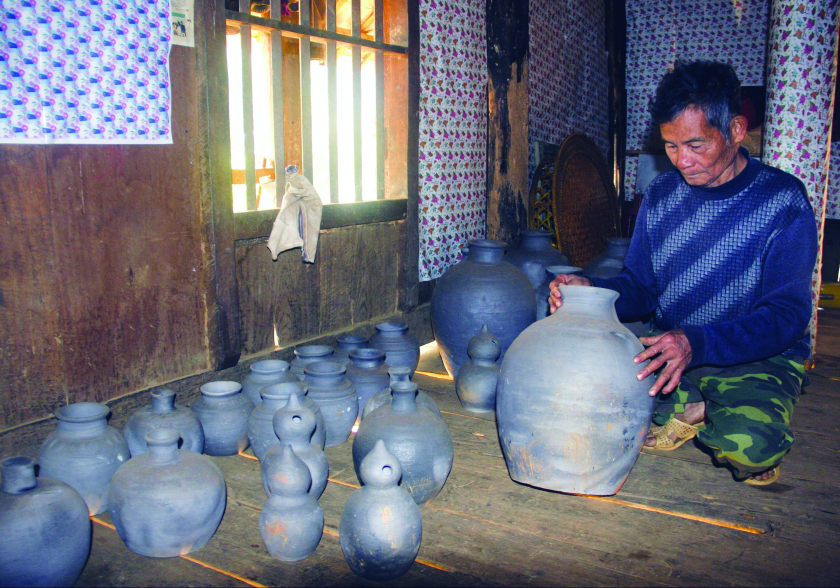
Mr. Hoang Van Nam inspects traditional ceramic products.
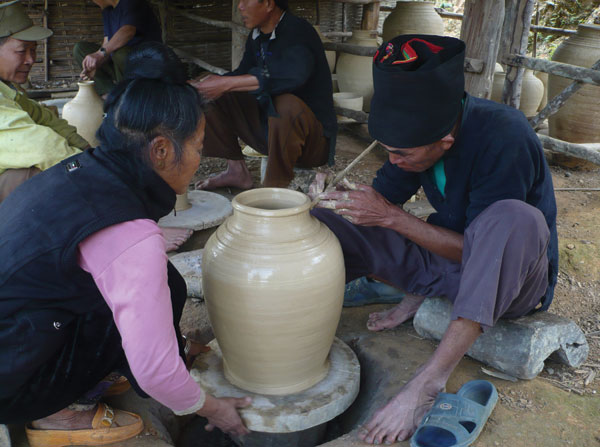

Since 2020, this model of experiencing traditional pottery has attracted more than 50 groups of tourists from inside and outside the province, with product sales revenue increasing about twice compared to previous years. In addition, for each group of visitors, Mr. Nam's family only charges a service fee of 200,000 - 400,000 VND, which is considered as a motivation for them to maintain their passion for the profession. When independent tourists come to Muong Chanh commune, they just need to ask for Mr. Nam and Mrs. Lanh's pottery making house to be shown the way to the place.
Besides Mr. Hoang Van Nam's house, Muong Chanh commune also has a few other potters, such as Mrs. Vi Thi Danh, who is old and weak, only occasionally touches the soil to ease her longing for the job; and Mr. Hoang Van Phuong's family.
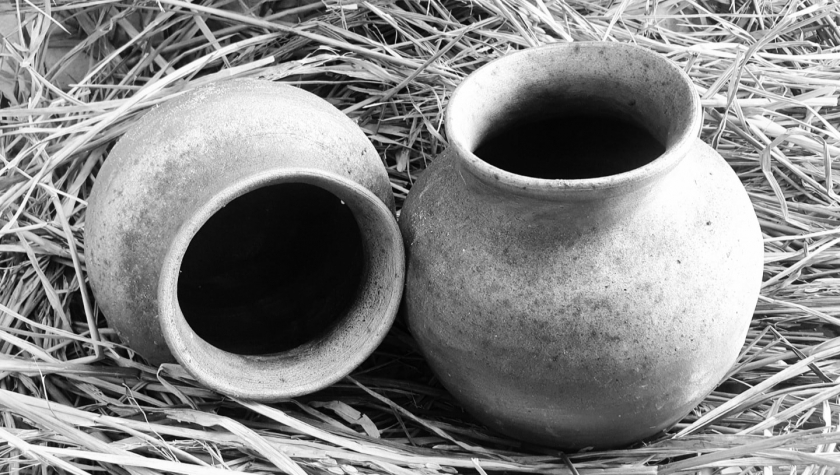
Because it is handmade and fired by hand, the entire batch of pottery is not always 100% ripe and as desired. Each Muong Chanh pottery product is therefore even more precious. It is precious not only because of the effort and talent of the artisans, but also because of the long-standing cultural values of the Thai people. Perhaps, in the future, pottery making experience models for tourists will continue to develop, which will preserve a bit of the pride of the ethnic people in the highlands of Son La province.






